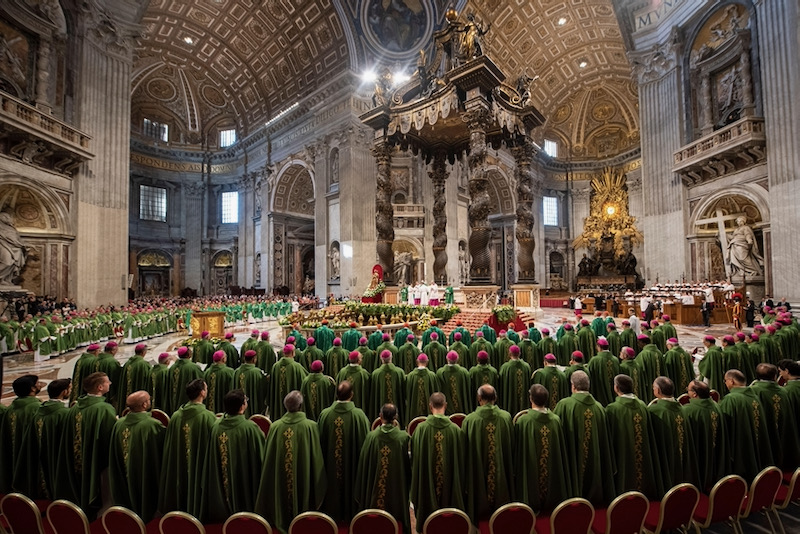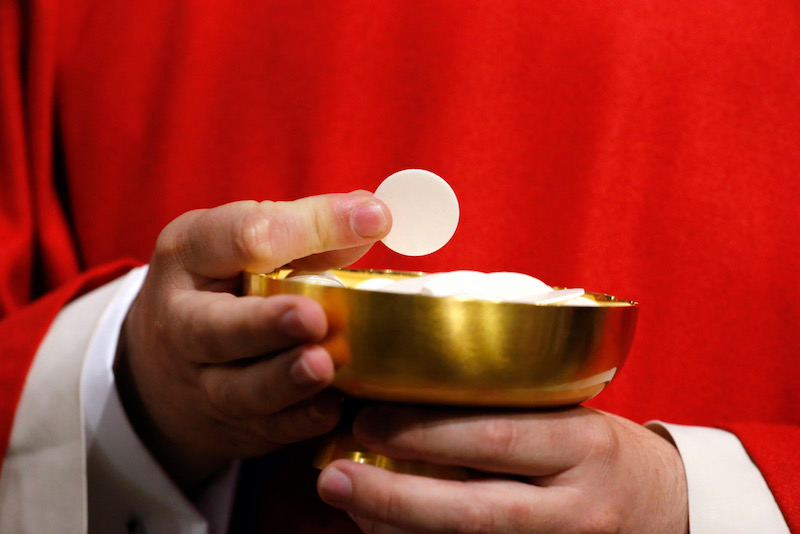Is “secular priesthood” an oxymoron or tautological? The term’s origins seem clear enough. It was a way to distinguish those clerics who operate in the world under the authority of a bishop from those cloistered behind monastery walls and under obedience to abbot, prior or similar. But there is something peculiar about the category, bridging – so it seems to claim – the divide between sacred and profane.
I found myself reflecting on the secular bit recently when I got a summons to serve as a juror. Pre-2004 that couldn’t have happened. Clergy were excluded from the lists – I suspect because we might once have been required to send folk to the scaffold. Now the state makes no distinction, just as many online forms no longer offer Rev as an option. Whatever privilege of clergy was once enjoyed by the First Estate has largely disappeared. Indeed, worse than that: esteem for clergy has evaporated across the UK, doubtless in part due to the many betrayals recorded by The Independent Inquiry Into Child Sexual Abuse, but also, I suspect, because the vicar no longer features in most people’s experience (or in soap-opera depictions of their lives). When would the unchurched actually encounter me, other than in a context in which they were already uncomfortable – wedding, funeral, hospital corridor …?
The Ipsos MORI Veracity Index 2020 reports that the ordained are regarded as less trustworthy than the average man or woman in the street. Now just 54 per cent trust clergy to tell the truth – the figures were 85 per cent in 1983 and 71 per cent in 2015. Doctors and nurses lead the way in this measure of public esteem (both 90 per cent and more), followed by engineers, teachers, judges, professors, scientists, museum curators and care-workers, apparently. Cold comfort for clergy that our word is deemed more reliable than that of an advertising executive or politician.
So back to clergy secularity. There is an observable sartorial divide between those who, in the face of the sea of faith’s long withdrawing roar, become more flamboyant in their clerical attire and those who, perhaps rather grudgingly, accept the white plastic band about the neck as a useful shorthand when out and about but do little more to signal their rank. There is a deeper theological rift between those who major on cultic sacrificial categories and those whose self-understanding is rooted more in the function of accompanying their parishioners through the ups and downs of life and the attendant ambiguities.
Am I sent to the parish mainly as an obedient spokesman for Holy Mother Church, inculcating orthodox faith in my flock? Or am I chiefly there to listen with them to the Scriptures, helping them to reflect on their own lives in the light of the Gospel, drawing on the wisdom of our Tradition to help them interpret their experience? Am I there principally to make Jesus present at the altar or to discover that presence in the lives of those I serve? Do I offer mass for them or preside over their celebration of the Eucharist? Is the point that I am set apart, a lamp on a lampstand, fenced off by my celibacy from their secular lot? Or should I be leaven in the lump, buried from view and risking contamination by contemporary mores. Who do I think I am, sacerdotal priest or presbyteral elder?
These are false dichotomies, maybe. A good pastor knows how to mediate between different themes and insights within a larger Catholicity. But it’s important to have self-knowledge – to know where I am coming from – and then to acknowledge that I don’t have the whole truth, whichever side of whichever line I find my comfort zone. That said, secular priesthood cannot simply be reduced to a cultic function.
Vatican II’s description of the parish clergy is a bit clunky and rather time-worn now. Presbyters are to “represent in a certain sense the Bishop”, on whose behalf they “sanctify and govern that portion of the Lord’s flock assigned to them”, thus “rendering the Universal Church visible in their locality”. (LG n.28) But that way of putting things only tells half the story; and it does so from a top-down perspective.
Certainly, the Second Vatican Council only wanted presbyters to be secular up to a point. The worker-priest experiments of previous decades had clearly rattled some prelates. Yet, by giving a positive account of the lay state, Lumen Gentium opened a path beyond clericalism, which regards the laity simply as the unqualified, non-clerics. It is the clergy who are subtracted from the dignity of the lay state by ordination, placed under rather than over the community, as Pope Francis insists. Not that presbyters are meant to be doormats – or wallflowers, for that matter – but the only credibility we can hope for in our post-modern and rather anti-clerical age is that which is earned by adopting a radical lifestyle; one that voices hope to those around us; a freedom of heart in which Christ’s downward path of service can be seen anew, he who made himself last of all and servant of all (Mk 10.45).
A parish priest – at least one who is celibate, rather than married – lives to some extent vicariously. We accompany our people in “the joy and hope, the grief and anguish” of their lives (GS n.1). Bidden to live as models for the flock, ministering within and beyond our parish communities, yet we know it is only the laity who can make the needed difference in our broken world. They are the ones who, in the living out of their baptismal vocation “seek the Kingdom of God by engaging in temporal affairs and directing them according to God’s will”. (LG n.32)
As the number of professional clergy tumbles, perhaps a more radically ordained-yet-secular priesthood may emerge. Meanwhile we presbyters serve, belonging (but not quite) to the places we are sent; knowing that one day we shall be gone; hoping that when our work is done Christ’s Body will remain – alive, active, faith-filled, joyful.
Fr Rob Esdaile is parish priest of Our Lady of Lourdes, Thames Ditton.



 Loading ...
Loading ...
What do you think?
You can post as a subscriber user ...
User comments (0)